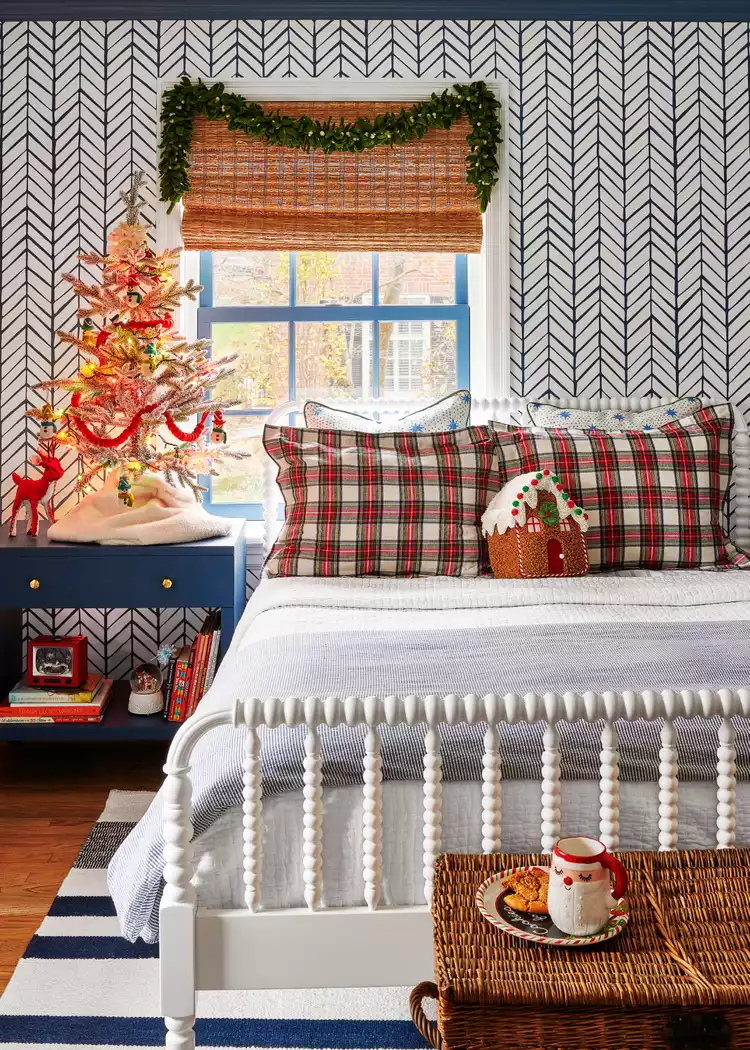Why Red Tartan for Christmas?
Today, tartan is a staple of Christmas décor, fashion, and celebrations. Whether it’s adorning a Christmas tree skirt, woven into stockings, or used in gift wrap, tartan evokes a feeling of nostalgia and timelessness. The pattern itself has continued to evolve, with new interpretations like buffalo plaid and modern variations emerging, but the classic red, green, and black tartan remains a beloved Christmas pattern.
The connection between tartan and Christmas is much more than just fashion. It represents heritage, family traditions, and a sense of belonging—all qualities that make Christmas so special. Whether you are decorating your home with a tartan pattern or donning a tartan scarf, the print has become an integral part of Christmas celebrations, adding a touch of rustic charm, warmth, and tradition.
The History and Meaning of Three Iconic Tartan Plaids
Tartan plaid patterns are synonymous with heritage, history, and holiday cheer—especially the classic red tartan often associated with Christmas. Let’s dive into three iconic tartans, their origins, and the clans they represent.
Tartan became associated with Christmas primarily due to its strong ties to Scottish culture, where wearing tartan, particularly during the winter solstice celebrations, is a long-standing tradition, and the popularity of Scottish heritage during Queen Victoria’s reign further solidified this connection, making tartan a symbol of festive cheer and family gatherings around the holidays.
The British royal family, particularly Queen Victoria, had a fondness for Scottish culture, which further popularized the wearing of tartan, including during Christmas time. It’s a tradition for royal family members to wear tartan to many royal affairs and visits.
Whether honoring Scottish heritage or simply appreciating their beauty, tartans like Royal Stewart, MacGregor, and Buchanan make the holidays all the more colorful and meaningful.
The Royal Stewart Tartan
tartan is a popular choice for Christmas decorations and holiday decor because of its red and green color scheme:
Popularity
The most iconic tartan, Royal Stewart is often used for holiday bows, dinnerware, and tablecloths.
History
Originally designed for Queen Victoria, Royal Stewart was chosen by Sir Walter Scott for King George IV’s visit to Edinburgh. Commoners adopted the tartan to show their royalist loyalty.
Colors
The tartan’s red, green, yellow, and white colors are festive and symbolic:
Represents myrrh, a gift given to baby Jesus by the three kings.
Represents frankincense, another gift given to baby Jesus by the three kings
The MacGregor Tartan
The MacGregor tartan is another beloved red-based pattern, featuring prominent green and black stripes with subtle white accents. The MacGregor clan, historically known as one of the most ancient and enduring clans, proudly used this tartan as a symbol of their resilience. While the MacGregor tartan reflects a rich and sometimes tumultuous history, its vibrant red hue makes it a holiday favorite.
The Buchanan Tartan
With its bright red foundation interwoven with bold yellows and greens, the Buchanan tartan exudes warmth and festivity. This tartan represents Clan Buchanan, known for its historical prominence in the Lowlands and contributions to Scottish independence movements. The cheerful palette of this tartan has made it a seasonal favorite for everything from holiday scarves to wrapping paper.
However, Tartan’s versatility extends beyond Christmas, and it became a prominent print in punk culture in the late 1970s, largely thanks to Vivienne Westwood and Malcolm McLaren, who used the bold pattern to represent rebellion and anti-establishment attitudes. Punk rockers in the UK adopted tartan as a symbol of defiance, often pairing it with studded leather jackets, safety pins, and torn clothing to challenge traditional fashion norms.
Today, Tartan has become a timeless fashion staple, often seen gracing the wardrobes of celebrities like Victoria Beckham, Rihanna, and A$AP Rocky, who effortlessly incorporate the classic pattern into their stylish looks. And yet, Tartan’s popularity extends beyond just celebrities, as it is embraced by fashion enthusiasts and everyday people alike, from street style aficionados to influencers on social media platforms. Whether worn as a statement piece or incorporated into casual outfits, tartan remains a beloved pattern that transcends trends and resonates with all generations.
Want to read more about popular tartans such as Buffalo Plaid or Burberry iconic paid, then click on the links.
And which tartan you incorporated into your festive décor this year?


















